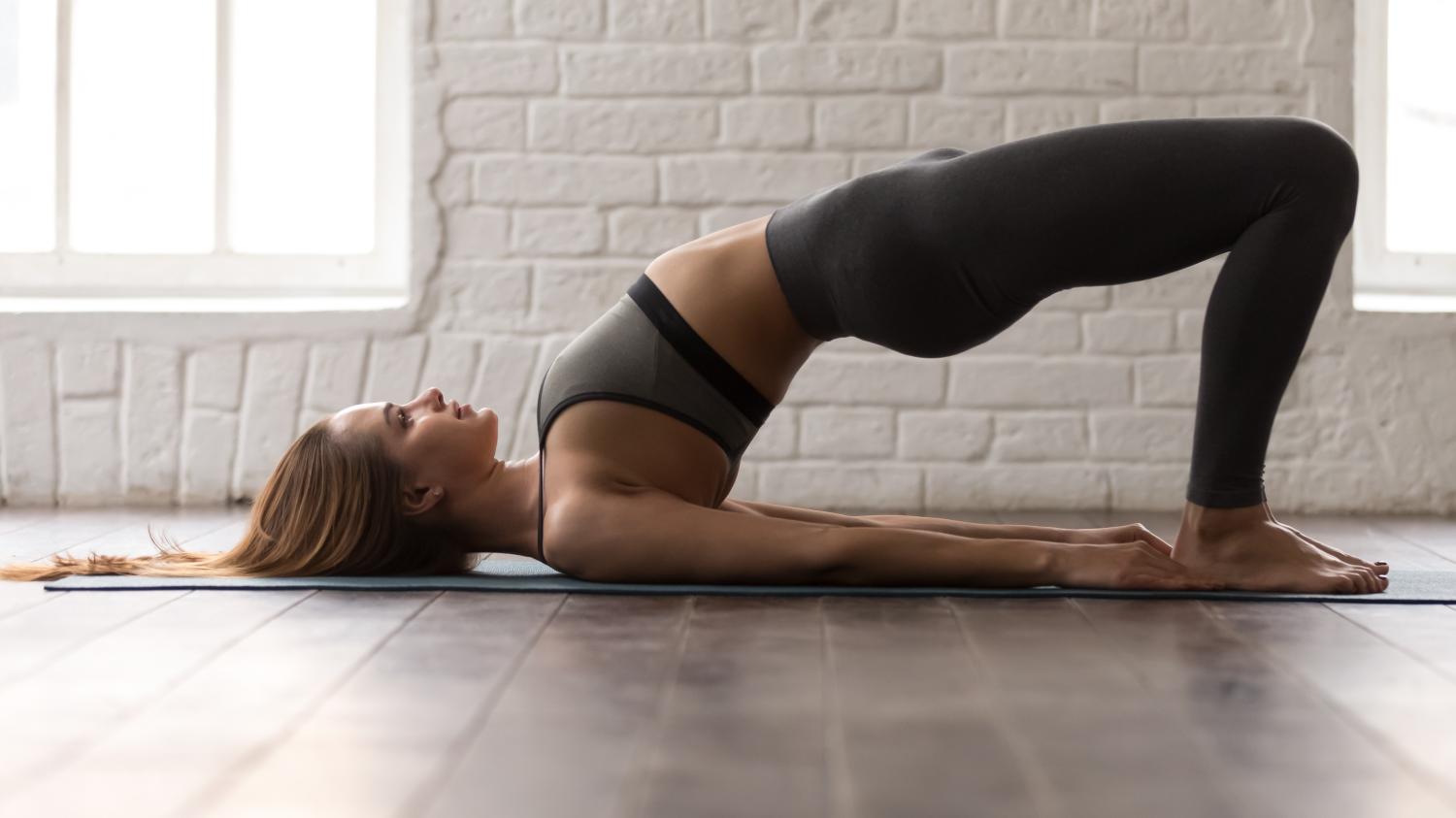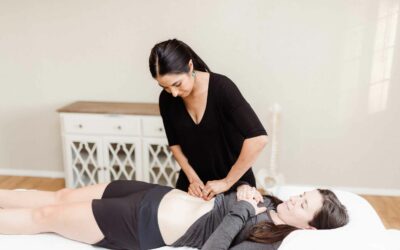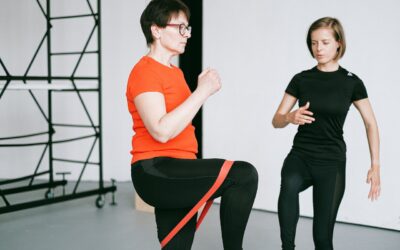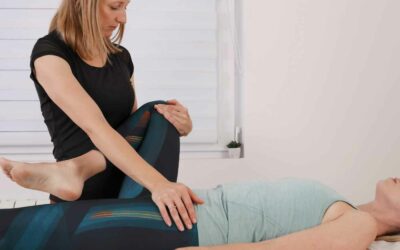Pelvic floor stretches are an effective way to alleviate a number of issues, including urinary incontinence and pelvic pain. These specialized exercises target the muscles of the pelvic floor as well as the surrounding joints and muscles, allowing for improved pelvic mobility. Some exercises only need a mat and a pillow ; and can easily be done in the home with no additional equipment required.
7 Pelvic Floor Stretches You Need For Better Health
- Happy Baby – The Happy baby pelvic floor release stretch is a great way to alleviate tension in the pelvic region. To do this exercise, begin by laying on your back with your feet flat on the floor and your knees bent. Then, bring your feet up towards the sky, making sure to keep them wider than hip width apart. You should be feeling a nice stretch along the inner thighs and groin area as you hold this pose. If you are having difficulty reaching your feet, you can use a yoga belt or even a bed sheet looped behind the knees to help grasp them. When doing this stretch, it is important to focus on deep breathing into the sides of the rib cage and belly in order to maximize its effectiveness.
- Child’s Pose – Child’s Pose is an excellent way to stretch the pelvic floor and provide relief from incontinence, as well as any pain-related issues. To perform this exercise, begin by kneeling on all fours and then sit back on your heels, with your knees wide apart and your toes touching. Feel a gentle stretch in the inner thighs as you fold forward and place your forehead to the floor. You can use a pillow beneath your seat or between your knees to adjust the depth of the stretch according to comfort level. As you hold this pose, be sure to focus on deep breathing into the sides of your rib cage and belly in order to maximize its effectiveness; this will further help relax and loosen up tight muscles in the pelvic region. Child’s pose can also be adapted to alter the stretch if needed by using a pillow either behind the knees, or in the front fold of the hips. Maintain an easy breath into the sides of the ribs. Visualize a relaxation, dropping, or “letting go” in the pelvic floor.
- Deep Squat – To do this stretch, stand with your feet a bit wider than hip-width apart and hold onto a kitchen counter, chair frame, or use the corner of the room for support. Keeping your feet grounded and slightly wider than hip-width apart, gently lower your hips downward until you reach as low as you comfortably can. Hold this position as you focus on taking deep breaths into the sides of your rib cage and belly to maximize its effectiveness. Visualize your pelvic floor opening up and releasing tension from the area to further relax tight muscles in the region. Incorporating Deep Squat into a regular routine can lead to improved mobility around the pelvic area, while providing increased symptom relief.
- Cat / Cow Stretch – To do this stretch, begin on your hands and knees in a ‘all fours’ position, with the back of the hands flat on the floor. Inhale and arch your back, allowing your abdomen to sink downward towards the floor without moving your shoulders or hips. Then exhale and press your back up towards the ceiling, rounding your spine and directing your tailbone downward (as if you were an angry cat). Pause, then inhale and reverse back down into cow position. This exercise should be repeated for 10-20 reps. t can also help improve overall mobility of the region when done regularly.
- Figure Four Stretch – The Figure Four Stretch is an exercise that can help to alleviate urinary incontinence and pain-related issues. To perform this exercise, begin by lying on your back with your right ankle crossed over your left knee. Then, gently lift up your left knee towards your chest and hold this position for around 30 seconds before switching to the other leg. This stretch helps target the hip and the muscles of the back of the hip which are connected to the pelvic floor; as such, it is paramount in maintaining good mobility in this region. You should aim to complete three repetitions on each side for optimal results, as it can aid in providing increased relief from both urinary incontinence and pain-related issues. With regular performance of this exercise, individuals may experience improved mobility in their pelvic area while gaining further relief from both urinary incontinence and related pain issues.
- Adductor Stretch – The adductor muscles are a group of muscles on the inner thigh which attach onto the inner aspect of the pelvic bone on each side. Tightness in these muscles is often associated with pelvic pain and vulva or vaginal pain, as well as weak pelvic floor muscles. To stretch this area, begin by lunging to the left by bending your left knee and keeping your right leg straight. Be sure to press your hips back, while taking care not to allow your left knee to press forward beyond your left foot. Hold this position for around 30 seconds before switching to the other leg and repeating 3 times per side for best results. This stretch can help target tight hip muscles connected to the pelvic floor, allowing for increased mobility in this region.
- Hamstring Stretch – The pelvic floor stretches discussed in this article are an important part of maintaining a healthy pelvis and strong pelvic floor muscles. These exercises should be performed 5-7 days per week for best results, focusing on breathing deeply into the sides of the rib cage and belly to maximize effectiveness. Additionally, visualizing the pelvic floor releasing tension during each stretch can help with relaxation and improved mobility. Along with these stretches, it is also recommended to receive an evaluation from a physical therapist specializing in pelvic floor dysfunction for a tailored program to meet individual goals.
For best results, it is recommended that these pelvic floor stretches be used in combination with wand therapy. This is a type of physical therapy that incorporates massage into treatment. Through wand therapy, individuals can receive targeted muscle manipulation which can help improve flexibility and range of motion around the pelvic area, leading to further relief from both incontinence and pain-related issues.
Pelvic stretching is widely regarded as an important part of maintaining general musculoskeletal health, but should always be done cautiously and under proper medical supervision. During all exercises make sure to maintain normal breathing. Holding your breath may have the opposite desired effect. There is no need to stretch through pain. Find a position that is a comfortable and gentle stretch that can be maintained. With regular performance of one or more exercises, individuals may experience improved pelvic mobility, flexibility, range of motion, and reduce symptoms of discomfort for an improved quality of living.
The Bottom Line
This is only a small sample size of pelvic floor stretches that will help improve your pelvic health. If you have more questions please don’t hesitate to give us a call today, or request an appointment!



